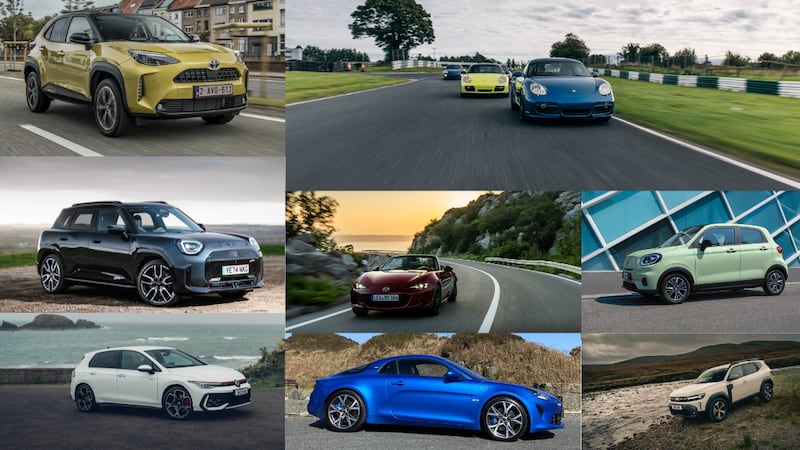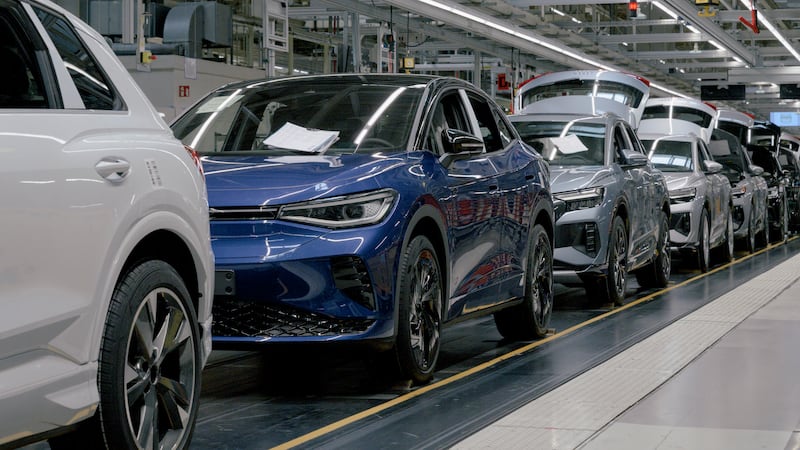I am nestled in supple leather as the air-conditioned seat blows cool air on my back and the roller of the built-in seat massager works its way along my spine. The 29 speakers of the Meridian stereo system challenge anything I have at home, but when I turn down the music I am lulled by the gentle splish-splosh of the flowing river as it slops over the bonnet.
Inside it’s leather and wood veneer. Outside it’s brown, murky river water, nearly a metre deep in parts, flowing through a deep gorge at the bottom of the Atlas Mountains, in Morocco. And the new Range Rover is in the middle of it. Not stuck or stranded – just driving along, creating its own bow wave.
The sunroof is open; all we really need is a fishing rod. A kilometre or so upriver we climb the bank and are on to the main road again, joining everyday traffic as it trundles along the canyon road. Apart from the little puddles left behind when we pull up, there is nothing to give away our river escapades.
The extreme contrasts on offer from the new Range Rover are enough to make your brain melt. You have a supposedly behemoth SUV that weighs less than an Audi Q5 or a BMW 3-Series family car. It’s only 12kg heavier than a Mini Countryman. You have room for five with thick carpet underfoot, while undertyre the sand is soft enough to sink you to your knees.
The weight savings are worth reiterating. The new Range Rover is the first fully fledged SUV to be built entirely on aluminium architecture. The firm invested more than €450 million in a new production line for this car. The body strength exceeds its predecessor’s but sheds a whopping 420kg, the equivalent of five healthy adult passengers. It’s a 39 per cent drop on the outgoing version, resulting in an 8 per cent fuel saving and lower emissions.
It also means the new car has much better on-road dynamics, with far less bodyroll than before. It’s still not quite as dynamic as the Range Rover Sport, but it’s far better than previous models.
The other big changes are to the cabin. It has been nine years since the last version was launched, and, although there have been updates, the Range Rover needed a serious revamp. The executives at Land Rover aren’t modest about their ambitions for the car. Programme manager David Lloyd explains that throughout the two years he worked to develop this car, the criteria were always clear: it had to live up to the Land Rover badge off-road while matching cars such as the Bentley Flying Spur and Mercedes S-Class in terms of comfort and interior refinement. It was a big ask, but it has been delivered.
50% fewer switches
With a greater refinement in the cabin come fewer switches – 50 per cent fewer in fact – and LED lighting inside. Like all luxury cars, the ability to personalise is impressive: more than 18,000 combinations are on offer.
During three days of testing we pitted the Range Rover against the maniacal traffic of Marrakesh in the morning rush hour, against near-vertical inclines on sand dunes that were powder-soft underfoot, and along rocky riverbeds that would break a regular car in two – if it wasn’t swept downriver before the suspension snapped.
The new Range Rover comes with the now-standard Land Rover terrain response system but with a new, automatic feature. Along with the five settings that range from snow/ice to rock, you can click the dial to automatic and, using more than 700 sensors, it takes over 100 measurements a second, working out the sort of terrain you are traversing and changing the settings accordingly. Ride height can be adjusted to make the car 50mm lower for easier entry and exit, while it can rise up to 145mm for extreme off-roading. It can wade through 90cm-deep water without issue, while the cabin remains completely dry thanks to Land Rover’s manufacturing target of less than a millimetre of gap between panels. These gaps are then further lined with rubber seals, turning the car into a veritable subaqua SUV.
The engine range has been revamped. For example, of the 420kg in weight savings, 120kg comes from a lighter V6 diesel power-train system. This 3-litre is going to be the mainstay for the expected 40-plus annual sales in Ireland. Matched to the firm’s impressive eight-speed automatic transmission, it puts out 258bhp, does 0-100km/h in 7.4 seconds and achieves a fuel economy of 7.5L/100km (37.7mpg). Emissions remain high, however, at 196g/km, and that means an annual motor-tax bill of €1,129 under the current regime, until Minister for Finance Michael Noonan gets to his feet to deliver the budget.
There are also a 4.4-litre V8 339bhp diesel, with emissions of 229g/km, and a V8 supercharged petrol with 322g/km, but even in the heady days of the Celtic Tiger they would require a lottery win to finance them.
The recovery of Land Rover has been remarkable. As the Irish economy collapsed, sales fell 92 per cent. The Evoque has turned that around, both here and internationally. So far this year sales for the brand are up 53 per cent in Europe, 84 per cent in China and 42 per cent in Latin America. Even in the US, where the brand has struggled against the big local marques, sales are up 24 per cent.
New models
According to the brand’s design director, Gerry McGovern, 80 per cent of Evoque buyers so far are new to the brand, and 70 per cent are new to SUVs. McGovern – whose father came from Co Leitrim, where he spent his summers until he was 15 years of age – is also responsible for the look of this new Range Rover. He will not talk specifically about new models but hints at additions to the Discovery range. Just as Range Rover has become its own subbrand within the Land Rover family, so too might the Discovery and legendary Defender.
The reality is that despite the incredible agility and comfort of this new model, there is a limited appetite for such cars in Ireland. Even if you can afford one, it’s ludicrous to think that someone would take a new €120,000 (before extras) and stick it in a river or throw it about in the sand, but it’s comforting to note that it’s not fazed if you do. Dublin floods? Muddy fields at the National Ploughing Championships? Not a worry. Just be careful with the dirty feet getting in and out. That’s quality carpet, you know.
In fact, it’s probably best to leave the green wellies at the door, there’s a good chap.
Range Rover TDV6 The lowdown
Engine
258bhp with 600Nm of torque
Performance
0-100km/h - 7.9 secs
Official fuel economy
7.5 L/100km (37.7 mpg)
Emissions
196 g/km (€1,129 in motor tax)
Arriving
January
Prices
Starting at €120,000














